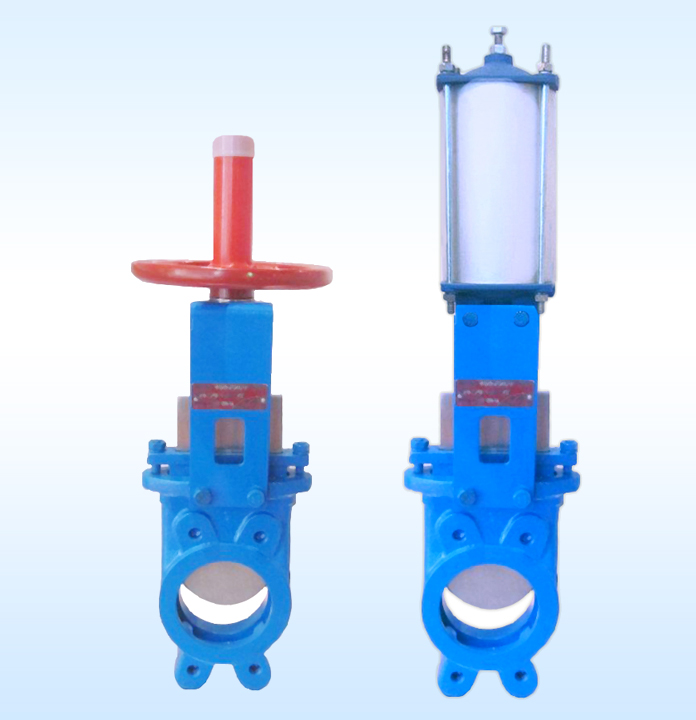| valve details: | |
| model | m-sereis |
| operation | handwheel / pneumatic |
| size | 40 mm to 800 mm |
| valve type | metal to metal, uni-directional |
| body & gland cover | cast iron / s.g. iron / ductile iron / cast steel |
| gate material | ss 304 / ss 316 / ss 316l |
| seat material | integral with body / ss o-ring |
| bush | aluminium phosphores bronze / en8 |
| yoke | mild steel epoxy coated |
| handwheel | press steel, powder coated / c.i. epoxy coated |
| working pressure | 2” to 10” 10bar, 12” to 16” 6bar, 18” 5 bar & 20” to 24” 4bar |
| end connection | lug type suitable for bs 10 table ‘e’, pn10, ansi b16.5 class 150# , bs 10 table ‘d’ |
| painting | except for stainless steel components, all exteriors will be painted with blue epoxy paint. |
| actuator details: | |
| barrel | alluminium / stainless steel |
| end cover | alluminium pressure die cast / c.i. |
| piston rod | stainless steel |
| seals | nitrile (viton on request) |
- knife gate valves is one of the few application-specific designs among industrial valves. it basically features a design that ensures minimum contact between moving parts of the valves. this is achieved by having a gate that is practically held between layers of gland packing without touching the body parts during most of its travels.
- the seating itself is accomplished with a non-sliding motion aided by jams located in the body. avoiding sliding contact between gate and body permits this valve to handle abrasive particles present in the media much better than conventional designs.
- another feature is the bevelled bottom edge of the gate (from which it derives the ‘knife’ in its name) which allows positive closure of the gate even when solid particles settles at the bottom of the body.
- in handling abrasive media, deflection cones are generally used in order to avoid direct impingement of
the media on the seat surface; hard facing of seat part is also sometimes used which involves stelliting of the seat or gate or complete intruding of body and gate. - another feature is the purge connection which let in suitable fluids at pressures higher than line pressure
to clean seating surfaces (body purges) and packing area (chest purges). this minimises abrasive wear and tear
during opening and closure of valve.
knife gate valves are excellent hopper isolation valves with their ability to cut through flowing powders and close by dislodging any material in the seating area. this is also perhaps the only valve design which can tolerate differential thermal expansion of its parts without affecting its functions, thus making an ideal choice for handling high temperature media.



